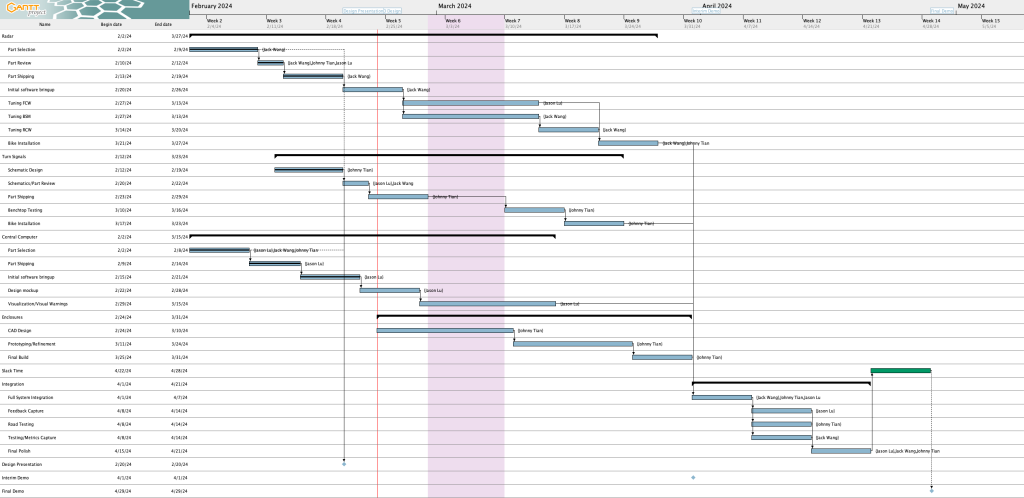Risk and Plans
- Software bring-ups: We have received all the parts that are needed for this phase of the project. We have dedicated this time in the schedule to do some initial software bring-ups and tests. For example, we need to make sure that the radar will produce the data that will work with our system; finding a suitable framework is another thing that we are working on. These are risk factors because even though we have dedicated time to do the initial bootstrapping, we might run into different situations along the way that will delay the project. Working with software is unpredictable, especially for a project like this. In addition, although each component might work at this stage, the integrating results are still pending. So we still run into the risk of things not working later on in the pipeline. We are managing these risks by doing careful research and making sure we have slack time and backup plans when things go off. For instance, Jason has done a wonderful job of looking into the best UI framework for our purpose. You can see more details on his status report this week. Jack searched for previous usage of K-LD7 radars with Raspberry Pis, trying to avoid issues that people ran into before. He was able to find some useful information for processing data. You can see more on his status report.
- Hardware designs: Johnny had some amazing ideas for the design of the enclosing box. However, as we ordered the other components, we might need to readjust the hardware design ideas we had in mind to fulfill the shape and size of those components. We have some risks on the timeline for the enclosure and mounting issues because it might be a bit more complex than what we originally expected. We will mitigate this by moving the design timeline up and extending the time available for designing the enclosures. Please see the schedule updates section for more details.
Changes in Design
- We have settled on a UI framework, Electron (see Jason’s status report for details)
- We also changed the power to the turn signal auto-cancellation system to use 3.3V as the high side input from the Pi, not 5V due to 3.3V being the max GPIO voltage (link 1, link 2)
- We also need to source an ADC converter with I2C communication, since the PI gpio doesn’t have analog input.
Schedule Updates
Here are the updates to the schedule from last week:
- Completed tasks 🎉:
- Radar parts have arrived
- Turn signal schematics have been designed
- Raspberry Pi initial software bringup is complete (see Jason’s status report for this week)
- Schedule changes 📅:
- The Verification/Simulation step for turn signals has been deleted, since the circuits seem simple enough that we can skip that step
- This change is motivated by the fact that we’re behind and this step seems non-essential
- The CAD design start date for the enclosures has been moved up to today (from 3/13), and the time for prototyping/refining the enclosures has been extended to two weeks
- There are some concerns that the original allocated time may not be enough since the things we need to build appear complex, so we wanted to move it up to get more time to work on it
- Total slack time has increased from 5 days to 7 days
- The Verification/Simulation step for turn signals has been deleted, since the circuits seem simple enough that we can skip that step
We are currently behind on the turn signal stuff due to incomplete schematic review, although we may be able to catch up by obtaining parts from ECE stock. On other aspects, we are currently on track.
